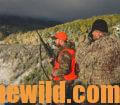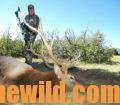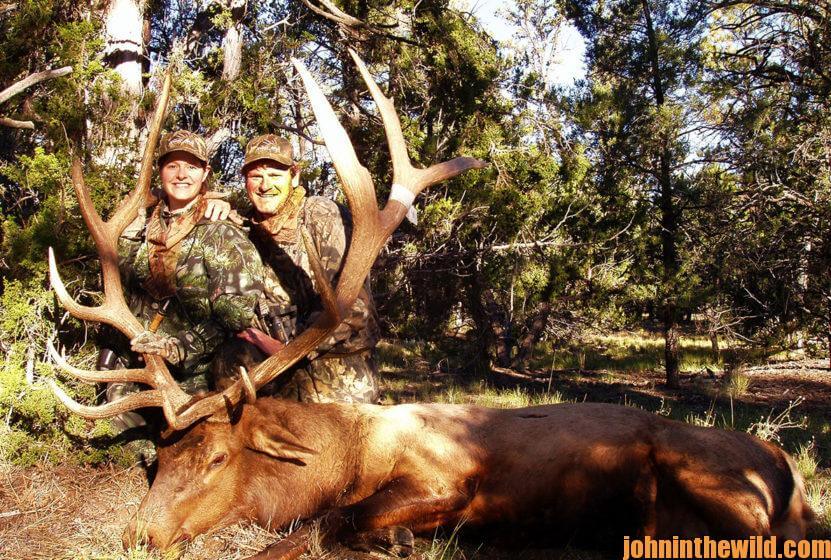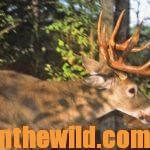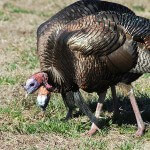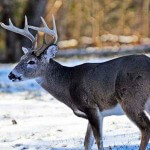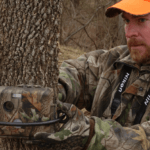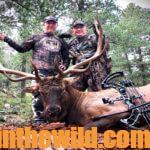Editor’s Note: Dieter Kaboth of Idaho, an avid elk hunter and former regional director for the Rocky Mountain Elk Foundation (https://www.rmef.org/), is a four-time World Champion elk bugler.
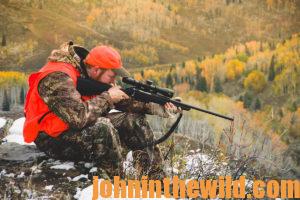 At first glance, you may think using several-different scents to eliminate human odor when you’re hunting sounds strange. However, when I’m in the north woods with their pine and fir trees, I’ll wear cover scents that match that area. If I’m in southern Colorado or New Mexico, I’ll wear sage and other cover scents. Sometimes I’ll wear both scents. Once you start mixing and matching scent covers to adapt to your terrain and to help you smell like the elk you sound like, you’ll be amazed at how close you can get to a bull.
At first glance, you may think using several-different scents to eliminate human odor when you’re hunting sounds strange. However, when I’m in the north woods with their pine and fir trees, I’ll wear cover scents that match that area. If I’m in southern Colorado or New Mexico, I’ll wear sage and other cover scents. Sometimes I’ll wear both scents. Once you start mixing and matching scent covers to adapt to your terrain and to help you smell like the elk you sound like, you’ll be amazed at how close you can get to a bull.
The Calling You Don’t Hear About:
 Although I do a lot of cow-calling and bugling, 50% of my calling is neither of these. I stomp my feet, break limbs and roll rocks in rocky terrain. I’ll pick-up a limb and rake the leaves and the brush, since elk make these sounds when they’re in an area. Elk don’t recognize other elk strictly by the vocalizations elk produce but also listen for the associated sounds that identify an elk. If you don’t use those associated sounds, like stomping your feet, kicking rocks, breaking twigs, brushing brush and raking trees, then a bull will know there’s something wrong with this picture. The bull will say, “Yeah, I hear that elk calling, but there’s no other sounds to indicate elk are there. So, if I don’t hear those other associated sounds, I’d better not go investigate.”
Although I do a lot of cow-calling and bugling, 50% of my calling is neither of these. I stomp my feet, break limbs and roll rocks in rocky terrain. I’ll pick-up a limb and rake the leaves and the brush, since elk make these sounds when they’re in an area. Elk don’t recognize other elk strictly by the vocalizations elk produce but also listen for the associated sounds that identify an elk. If you don’t use those associated sounds, like stomping your feet, kicking rocks, breaking twigs, brushing brush and raking trees, then a bull will know there’s something wrong with this picture. The bull will say, “Yeah, I hear that elk calling, but there’s no other sounds to indicate elk are there. So, if I don’t hear those other associated sounds, I’d better not go investigate.”
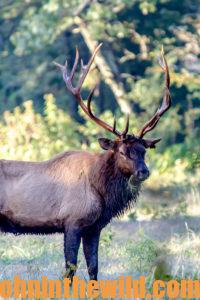 One of the biggest mistakes elk hunters make is to think that calling-in elk simply involves using elk calls. Don’t get me wrong, elk calls are important. But the associated sounds elk make are just as important to successfully calling-in a bull. When an elk’s in close, I don’t make those sounds. But when an elk is 100-yards-or-more away, I want to give that bull extra sounds that will make him feel confident he’s coming to another elk or to a herd of elk.
One of the biggest mistakes elk hunters make is to think that calling-in elk simply involves using elk calls. Don’t get me wrong, elk calls are important. But the associated sounds elk make are just as important to successfully calling-in a bull. When an elk’s in close, I don’t make those sounds. But when an elk is 100-yards-or-more away, I want to give that bull extra sounds that will make him feel confident he’s coming to another elk or to a herd of elk.
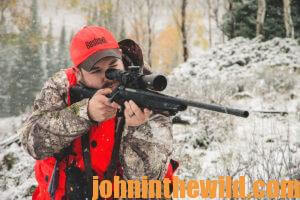 If you have your hunter 75- to 100-yards away from you, either in front of you or to the side, then you can add-in all these subtle calls to help bring the bull right to the hunter. Too, by having the shooter at that distance from the caller, if the elk starts to wander off, either to the left or to the right, the caller can move, adjust his position and throw his calls to make the bull come right to the shooter (at least that’s the way it’s supposed to work.) Now, this tactic is primarily for the bowhunter. When I’m gun hunting and know my hunter can take an elk from 100 – 300 or more yards, then I can sit right next to my hunter and call-in elk.
If you have your hunter 75- to 100-yards away from you, either in front of you or to the side, then you can add-in all these subtle calls to help bring the bull right to the hunter. Too, by having the shooter at that distance from the caller, if the elk starts to wander off, either to the left or to the right, the caller can move, adjust his position and throw his calls to make the bull come right to the shooter (at least that’s the way it’s supposed to work.) Now, this tactic is primarily for the bowhunter. When I’m gun hunting and know my hunter can take an elk from 100 – 300 or more yards, then I can sit right next to my hunter and call-in elk.
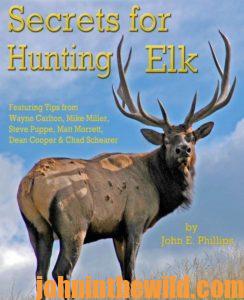 To learn more about hunting elk successfully, check out John E. Phillips’ book, “Secrets for Hunting Elk,” available in Kindle and Audible at https://www.amazon.com/. You may have to copy and paste this click into your browser. (When you click on this book, notice on the left where Amazon allows you to read 10% of the book for free).
To learn more about hunting elk successfully, check out John E. Phillips’ book, “Secrets for Hunting Elk,” available in Kindle and Audible at https://www.amazon.com/. You may have to copy and paste this click into your browser. (When you click on this book, notice on the left where Amazon allows you to read 10% of the book for free).

